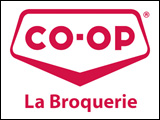As children head back to the classroom, Health Canada is reminding parents of the importance of allergy awareness when packing lunches for their children. Severe allergic reactions can occur quickly and without warning, and some foods can be life-threatening to allergic children.
It is estimated that as many as 1.2 million Canadians may be affected by allergies. Some studies indicate that these numbers are increasing, especially among children. Peanuts, tree nuts, sesame seeds, soy, seafood, wheat, eggs, milk, mustard and sulphites are the food allergens most commonly associated with severe allergic reactions in Canada.
When someone ingests even a tiny amount of an allergen, the symptoms of a reaction may develop quickly and become very serious. The most dangerous symptoms include breathing difficulties or a drop in blood pressure with shock, which may result in loss of consciousness, anaphylaxis and even death.
Because of this, many elementary schools are now restricting certain foods from students’ lunches. Parents are encouraged to follow school policies, even if their child isn’t allergic. To find out which foods, if any, are restricted in their children’s schools, parents should contact the school directly.
To date, there is no cure for food allergies. Avoiding an allergen is the only effective way to prevent allergic reactions. This is why it is important that allergic children not be exposed to allergens that regularly cause extreme and sometimes fatal reactions.
To help parents and Canadians with food allergies identify foods that they should avoid, Health Canada has recently updated the rules governing the labelling of priority allergens. Details are available on Health Canada’s website.



